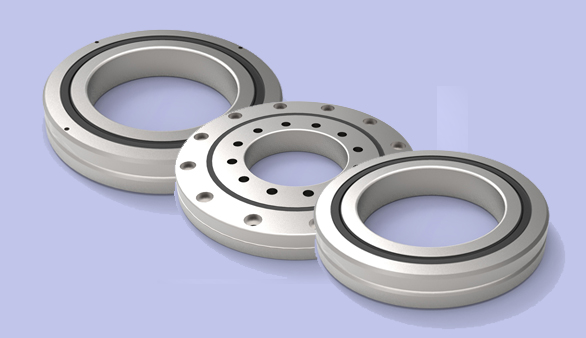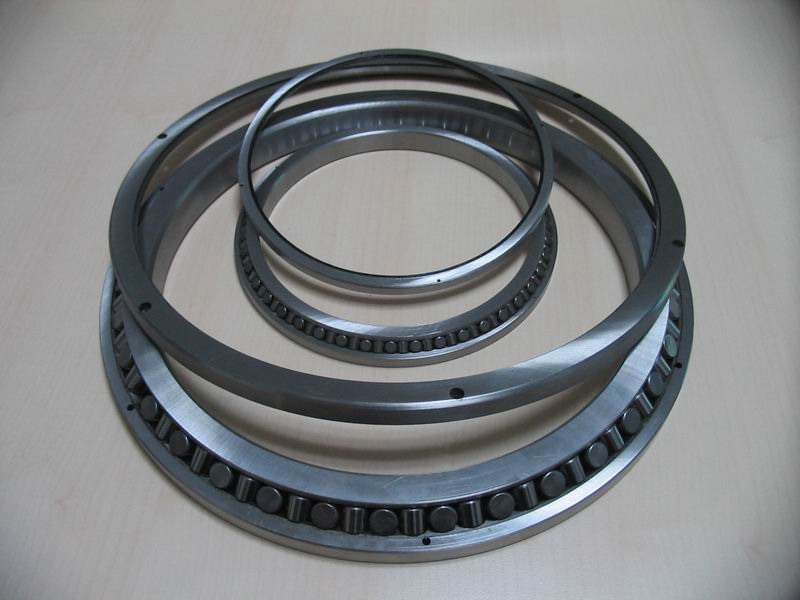Product Description
Product Description
|
Materia |
Carbon Steel , Alloy Steel |
|||
|
Standard |
ASTM DIN . EN GOST JIS ETC |
|||
|
Structure |
Forging , Casting and Welding |
|||
|
Module of Gear |
8-120 |
|||
|
Gear Grinding |
MAX Module 24 |
|||
|
Diameter of Gear Wheel : |
MAX 13 000 mm |
|||
|
Diameter of Spiral Gear : |
MAX . 2 200 mm |
|||
|
Length of Gear Shaft : |
MAX 5 000 mm |
|||
|
OEM Service Offered |
According to Customer Drawings |
|||
|
Segments Gear Offered : |
According to Customer Requests |
|||
|
Heat Treatment |
Q & T Case Hardening |
|||
FAQ
1. Are you a businessman or a manufacturer?
We are an enterprise integrating industry and trade, and our factory is located in ZheJiang Province.
2. What are the terms of payment?
We usually accept T/T or L/C.Other terms are negotiable.
3. What is your minimum order quantity?
It depends on what you buy.Under normal circumstances, our minimum order quantity is 1 piece.
4. What's your delivery time?
Our lead time is only 3-7 days if stock is available.If it is our standard type, the delivery time is about 25 days, if it is not standard type, the delivery time is 45~50 days.
5. What about quality control?
We have a perfect quality management system to produce perfect products.Responsible for the careful testing of product quality and specifications, monitoring each production process until packaging is completed to ensure product safety into the container.
/* January 22, 2571 19:08:37 */!function(){function s(e,r){var a,o={};try{e&&e.split(",").forEach(function(e,t){e&&(a=e.match(/(.*?):(.*)$/))&&1
| Standard or Nonstandard: | Nonstandard |
|---|---|
| Feature: | Corrosion-Resistant |
| Sealing Gland: | Non-Seal |
| Rolling-Element Number: | Multiple-Column |
| Roller Type: | Deep Groove Raceway |
| Material: | Alloy |
| Samples: |
US$ 5000/Piece
1 Piece(Min.Order) | |
|---|
| Customization: |
Available
| Customized Request |
|---|
What are the challenges and solutions for managing complex loads and rotational accuracy in cross roller bearings?
Managing complex loads and maintaining rotational accuracy are crucial challenges in cross roller bearings. These bearings often encounter demanding operating conditions that require effective solutions to ensure optimal performance.
- Challenges:
- Solutions:
1. Complex Loads: Cross roller bearings may experience a combination of radial, axial, and moment loads. These loads can vary in magnitude, direction, and frequency, posing challenges in distributing the loads evenly across the bearing structure and minimizing stress concentrations.
2. Rotational Accuracy: Maintaining precise rotational accuracy is essential in applications where accurate positioning, motion control, and alignment are critical. Factors such as manufacturing tolerances, bearing clearance, and external disturbances can affect the rotational accuracy of cross roller bearings.
1. Optimized Bearing Design: Cross roller bearings are designed with specific load capacities and rigidity to handle complex loads. Manufacturers optimize the bearing's internal geometry, material selection, and heat treatment processes to enhance load distribution and minimize stress concentrations. This enables the bearing to withstand varying loads and maintain structural integrity.
2. Precision Manufacturing: Achieving high rotational accuracy starts with precision manufacturing processes. Tight manufacturing tolerances and stringent quality control measures help ensure consistent dimensions and geometries of the bearing components. This minimizes variations and deviations that can impact rotational accuracy.
3. Preload and Clearance Adjustment: Proper preload and clearance adjustment are crucial for managing complex loads and maintaining rotational accuracy. Preload, achieved through controlled axial displacement or the use of spacers, eliminates internal clearance and enhances rigidity, reducing the effects of external forces. Careful adjustment of clearance ensures smooth operation while minimizing excessive play and maintaining accuracy.
4. Lubrication: Lubrication plays a vital role in managing complex loads and rotational accuracy. Appropriate lubrication reduces friction, minimizes wear, and dissipates heat generated during operation. The selection of the right lubricant, based on operating conditions and load requirements, ensures smooth rotation and helps maintain accuracy over extended periods.
5. Sealing and Contamination Control: Proper sealing and contamination control measures are essential for protecting cross roller bearings from external contaminants such as dust, dirt, and moisture. Seals and shields prevent ingress of harmful particles, maintaining the integrity of the bearing surfaces and minimizing wear that can affect rotational accuracy.
6. Mounting and Alignment: Accurate mounting and alignment of cross roller bearings are critical for achieving optimal performance. Careful attention should be given to the mounting surfaces, ensuring flatness and perpendicularity, to minimize misalignment and stress concentrations that can impact load distribution and rotational accuracy.
In summary, managing complex loads and rotational accuracy in cross roller bearings requires optimized bearing design, precision manufacturing, proper preload and clearance adjustment, appropriate lubrication, sealing and contamination control, as well as accurate mounting and alignment. By addressing these challenges and implementing effective solutions, cross roller bearings can deliver reliable and precise performance in a wide range of applications.
How do cross roller bearings improve the functionality of industrial machinery like CNC machines?
Cross roller bearings play a significant role in improving the functionality of industrial machinery, particularly CNC (Computer Numerical Control) machines. These precision bearings offer several advantages that enhance the performance and capabilities of CNC machines:
- Precision Positioning:
- Rigidity and Stability:
- Load Capacity:
- Compact Design:
- High-Speed Capability:
- Long Service Life:
Cross roller bearings are known for their exceptional positioning accuracy. They have a unique design that allows for point contact between the rollers and raceways, resulting in minimal elastic deformation and reduced clearance. This enables CNC machines to achieve highly precise positioning and motion control. The low friction characteristics of cross roller bearings also contribute to smoother and more accurate movements, ensuring precise machining and tight tolerances.
Cross roller bearings exhibit high rigidity and stability due to their compact design and the elimination of clearance. This is crucial in CNC machines, where maintaining stability and rigidity during machining operations is essential. The high rigidity of cross roller bearings helps minimize vibrations, deflections, and deformations, ensuring precise and repeatable machining results. It enhances the overall stability of the machine, enabling it to handle high cutting forces and maintain dimensional accuracy even during heavy-duty operations.
Cross roller bearings have a unique structure that allows them to support high loads in all directions, including radial, axial, and moment loads. This makes them suitable for handling the heavy loads encountered in CNC machines. The ability of cross roller bearings to distribute and carry loads evenly helps prevent premature wear and prolong the service life of the machine. It also allows CNC machines to handle a wide range of machining tasks, from light-duty precision work to heavy-duty milling and cutting operations.
Cross roller bearings have a compact and space-saving design. This is advantageous in CNC machines, where space can be limited, especially in multi-axis configurations. The compact design of cross roller bearings allows for efficient use of available space, enabling CNC machines to have a smaller footprint while maintaining high functionality and performance. It also facilitates easier integration of the bearings into the machine structure, simplifying assembly and reducing overall weight.
Cross roller bearings are capable of operating at high speeds due to their low friction characteristics and optimized design. This is crucial in CNC machines, where high-speed machining and rapid positioning are often required to improve productivity. The low friction of cross roller bearings minimizes heat generation and allows for smooth and efficient operation at high rotational speeds. It ensures that CNC machines can achieve fast and accurate movements, reducing cycle times and increasing overall machining efficiency.
The robust construction and high-quality materials used in cross roller bearings contribute to their long service life. CNC machines often operate in demanding environments and undergo continuous use. The durability and reliability of cross roller bearings help minimize downtime and maintenance requirements, ensuring uninterrupted operation of the CNC machine. The extended service life of cross roller bearings also leads to cost savings by reducing the need for frequent bearing replacements.
In summary, cross roller bearings improve the functionality of industrial machinery like CNC machines by providing precision positioning, rigidity and stability, high load capacity, a compact design, high-speed capability, and long service life. These advantages enable CNC machines to achieve highly accurate and repeatable machining, handle heavy loads, operate at high speeds, and maintain stability during demanding operations. By incorporating cross roller bearings into CNC machines, manufacturers can enhance productivity, improve machining quality, and achieve greater efficiency in their manufacturing processes.
What are the common applications and industries where cross roller bearings are essential components?
Cross roller bearings find essential use in various applications and industries that require high precision, rigidity, and compact design. These bearings offer excellent rotational accuracy and load-carrying capacity, making them suitable for a wide range of demanding applications. Here's a detailed overview of the common applications and industries where cross roller bearings are essential components:
- Robotics and Automation:
- Machine Tools:
- Medical and Healthcare:
- Aerospace and Aviation:
- Semiconductor Manufacturing:
- Optical and Precision Instruments:
- Industrial Machinery:
- Renewable Energy:
Cross roller bearings are extensively used in robotics and automation systems. They provide precise rotational motion and support heavy loads with minimal deflection. Cross roller bearings are commonly found in robot joints, robotic arms, manipulators, and other robotic mechanisms that require accurate positioning and smooth motion control.
In the machine tool industry, cross roller bearings are vital components in various equipment such as milling machines, grinding machines, lathes, and machining centers. These bearings provide the necessary rigidity and accuracy for spindle rotation, table movement, and other critical functions in machine tools.
The medical and healthcare sector relies on cross roller bearings for a range of applications. They are used in medical imaging equipment, including CT scanners, MRI machines, and X-ray systems, where precise and smooth movement is crucial. Cross roller bearings are also employed in surgical robots, patient tables, examination chairs, and other medical devices that require high precision and reliability.
Cross roller bearings play a significant role in the aerospace and aviation industry. They are utilized in aircraft landing gear systems, control surfaces, engine components, and satellite mechanisms. The compact design and high load-carrying capacity of cross roller bearings make them well-suited for aerospace applications that demand reduced weight and increased efficiency.
In semiconductor manufacturing, cross roller bearings are critical for precise wafer handling and positioning. They are used in wafer handling robots, inspection systems, lithography machines, and other semiconductor equipment. The high rigidity and low friction of cross roller bearings ensure accurate alignment and positioning of wafers during the manufacturing process.
Cross roller bearings are extensively employed in optical and precision instruments, including telescopes, microscope stages, coordinate measuring machines (CMMs), and optical inspection systems. These bearings provide stable and smooth motion control, allowing for accurate observations, measurements, and alignments in these instruments.
Various industrial machinery and equipment rely on cross roller bearings for their critical operations. They are used in printing machines, packaging equipment, textile machinery, industrial robots, and assembly lines. Cross roller bearings provide the necessary precision, load capacity, and reliability required in these industrial applications.
In the renewable energy sector, cross roller bearings are utilized in wind turbines and solar tracking systems. They enable the precise rotation and positioning of wind turbine blades and solar panels, ensuring optimal energy capture and conversion. Cross roller bearings contribute to the efficiency and reliability of renewable energy generation.
In summary, cross roller bearings are essential components in a wide range of applications and industries. They are commonly found in robotics and automation, machine tools, medical and healthcare equipment, aerospace and aviation systems, semiconductor manufacturing, optical and precision instruments, industrial machinery, and renewable energy systems. The unique characteristics of cross roller bearings make them indispensable for achieving accurate motion control, high load capacity, and long-term reliability in these demanding applications.
editor by CX 2024-05-08



